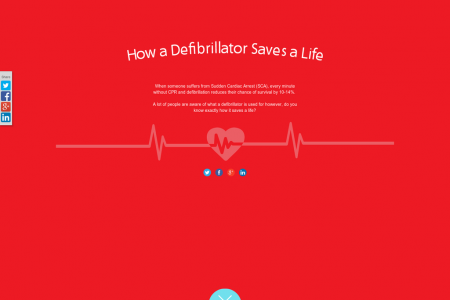
Traumatic Brain Injuries
Traumațic Brain Injury The Road To Recovery An acquired brain injury (ABI) is damage to the brain that a person was not born with, but happened as the result of an accident or illness Acquired brain injuries Traumatic Brain Injury Non-traumatic Brain (TBI) Injury ('atraumatic') Caused by an external impact Caused by internal bodily events to the head Brain tumours Slips Meningitis Trips Encephalitis Falls Stroke Road accidents Arteriovenous malformation Sports (AVM) Violence Aneurysm Warfare Brain haemorrhage Accidents at work Medical negligence Serious head injury is characterised by unconsciousness for six hours or more and post-traumatic amnesia for 24 hours or more Men are 2-3 more likely to sustain a TBI than women Alcohol is a factor in up to 65% of adult head injuries On average 1 million people live with long-term effects of TBI Road accidents are the biggest single cause of TBI When to call 999 after a head trauma Unconsciousness or sleepiness Clear fluid or blood leaking from the nose or ears Bruising behind one or both ears Skull damage or a penetrating head injury Speech or vision problems Can't understand what people are saying Reading or writing problems Problems with balance and coordination Weakness or loss of feeling in limbs Having a seizure or fit Memory loss Headache Vomiting Irritability Unusual behaviour Glasgow Coma Scale Grades brain injuries from 3 to 15, 3 being the most severe and 15 the least. Moderate brain injury 9-12 Severe brain injury Mild brain injury 12-15 3-9 The scale is measured using eye response, body movement and speech Doctors use the GCS to monitor and assess patients with an acute brain injury Patients will be assessed from initial diagnosis until they have made a full recovery Diagnosis Emergency observation Levels of awareness, breathing, blood pressure EVERY 30 mins and other measurements are initially taken every 30 minutes. X-ray Used to assess fractures to the skull or upper vertebrae that could lead to further damage or infection. CT Scan Helps doctors examine the bone, muscle and tissue in the neck, and check for bleeding or swelling of the brain soon after the trauma. MRI Like the CT scan, used to evaluate persistent or worsening symptoms, or where there is a concern about a patent's pre-existing conditions. Ongoing appointments Doctors will continue to assess a patient's condition during hospital stay and outpatient visits, chart recovery progress, and spot emerging issues over time. The full effects of the injury may not be revealed for weeks or months Types & Effects of TBI FRONTAL LOBE HYPOXIC & ANOXIC DIFFUSE AXONAL Frontal Lobe Damage Impact can affect behaviour, personality and cognitive reasoning. Memory Concentration Attention span Impulsiveness Depression Mood swings Personality change Treatment & management o Specialists skilled in neurology rehabilitation o Orthopaedics for rehabilitation treatment o Medication to curb impulsive behaviour Hypoxic & Anoxic Injury Caused by restriction (hypoxic) or complete lack (anoxic) of oxygen to the brain. Hormonal imbalance Limb spasms Convulsions Persistent vegetative state (coma) Death Treatment & management o Adequate airway - admittance to Intensive Care Unit o Use of enough oxygen to saturate the blood o Supportive cardio-vascular activity Diffuse Axonal Brain Injury The brain moves within the skull and pivots on the brain stem, damaging connections. Prolonged unconsciousness Coma Cognitive impairment Memory impairment Chronic Traumatic Encephalopathy (CTE, “punch-drunk") Potential for other symptoms Treatment & management o Speech therapy and physical therapy o Occupational therapy o Counselling o Adaptive equipment training A year after their accident, almost three quarters of people with moderate to serious head injuries are expected to have resumed their usual daily activities Preventing head injuries • Wear a helmet when cycling or skiing • Fasten your seatbelt in any motor vehicle • Keep your staircases clutter-free • Ensure rugs or stair carpets are fitted properly • Clean up spillages immediately • Do not stand on chairs, use a stepladder • Install stair gates for infants and children • Use a non-slip mat in the bath tub • Don a hard hat on a construction site • Follow work safety guidelines People who have experienced a serious head injury are legally required to inform the DVLA and their insurance company, and are not permitted to drive until a doctor has confirmed that they have made a full recovery This infographic is intended for educational use only and should not be used as a substitute for professional medical advice. Sources British Medical Journal/JNNP, Van der Naalta, Van Zomerenb, Sluiterc, Minderhouda - One Year Outcome In Mild To Moderate Head Injury Neuropathology - Traumatic Brain Injury And Increased Intracranial Pressure The Glasgow Coma Scale - What is the Glasgow Coma Scale? NHS - Symptoms of Severe Brain Injuries, Brain Injury Hub - Non-Traumatic Brain Injury HSCIC - HES on...Traumatic Brain Injuries Headway - Key Facts and Statistics, Other Forms of Acquired Brain Injury Traumatic Brain Injury - What is TBI, Causes of TBI Centre for Neuro-Skills - Frontal Lobes Brain and Spinal Cord - Causes of Diffuse Axonal Injury, Anoxic Brain Claim 500 www.claim500.co.uk
Traumatic Brain Injuries
Writer
Source
http://www.c...nfographicCategory
HealthGet a Quote











